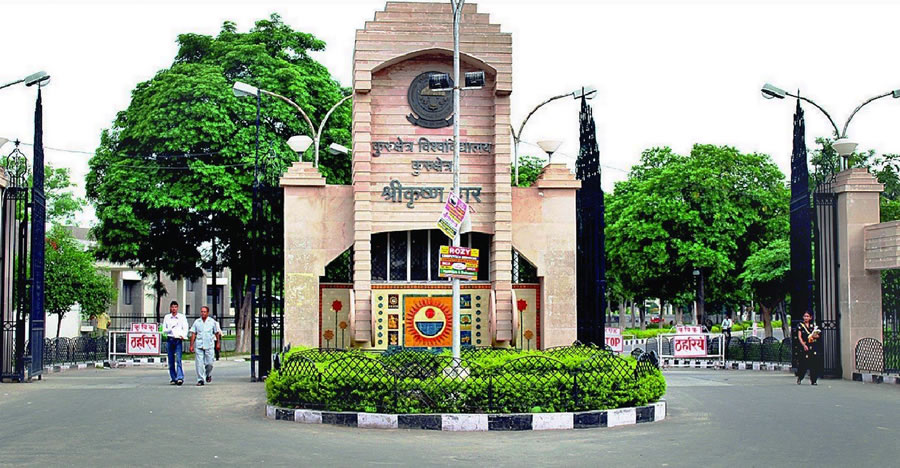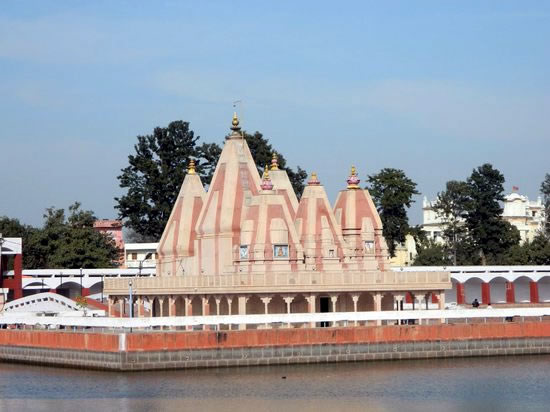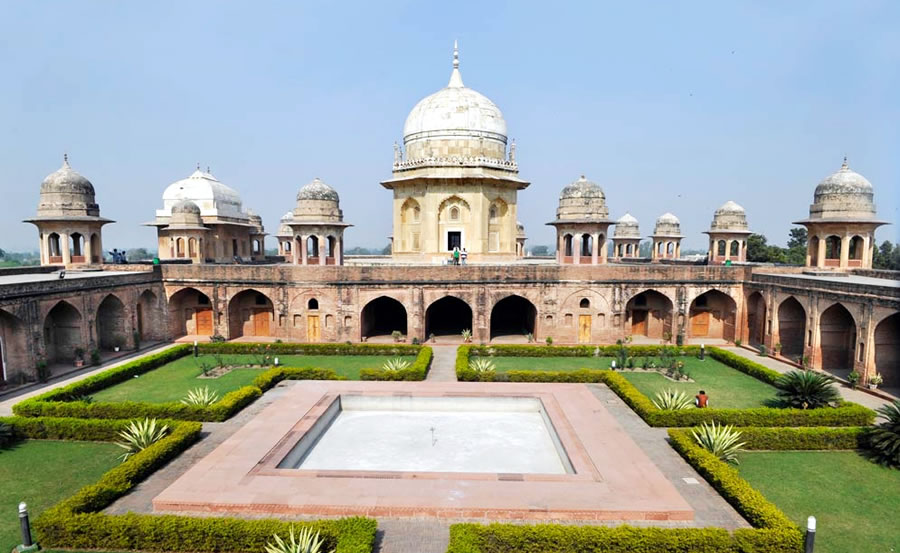
The Kurukshetra area in Haryana, India, is one of the oldest towns in the world, and it is deeply loved and steeped in Hindu mythology. Many dynasties have reigned over this region with reverence over the centuries, and it is also known to have been a center of learning under the formidable Maurya Empire’s reign of terror.
Kurukshetra, the birthplace of the Bhagwat Gita, has watched India’s rise and fall through numerous eras of prosperity. It is well known as the location where the battle of Kurukshetra, described in the Indian epic Mahabharata, is claimed to have taken place.
This area, which is also regarded as the cradle of civilization itself according to Hindu mythology, is one of the holiest destinations in India and is a treasure trove of unique folklore and stories. Here are some of the most fascinating places to see in Kurukshetra.
1. Visit Jyotisar
According to Hindu tradition, Jyotisar is a little village on the Kurukshetra-Pahoa route, where the sacred Bhagavad Gita was presented in the Indian epic, Mahabharata. It is one of the holiest locations in the area. In the epic, Krishna, Lord Vishnu’s avatar, persuaded Arjuna to abandon his dissenting position just before the start of the conflict.
A banyan tree is still treasured in this town, and it is considered to be an offshoot of the sacred Banyan tree, which was a witness to the birth of one of Hinduism’s most renowned Holy Scriptures, the Bhagwat Gita, which is one of the most recognized Holy Scriptures in the world.
The Haryana Tourism Department organizes an instructive light and music display at this place on a regular basis, which tells sections of the epic in a compelling and informative manner.
2. Travel to the Brahma Sarovar

The Brahma Sarovar, located in the scenic town of Thanesar, is a water tank that has weathered the test of time and is still revered as a sacred site by Hindu pilgrims. Even Al Beruni, a world-renowned 12th-century scholar, was compelled to describe this massive man-made pond in one of his memoirs on his travels across India.
In addition to being a sight to behold, the sarovar becomes overrun with pilgrims during a solar eclipse, since it is thought that taking a plunge in its waters during that time can absolve one of one’s sins completely. According to tradition, a shrine dedicated to Lord Shiva may be found on the northern bank of the Sarovar, and the Linga that adorns the shrine was erected by Lord Brahma himself.
It is a must-see location since this water tank is described in several ancient sources and is thus considered to be truly historic.
3. Take a Trip to the Kos Minars
The Kos Minars are mediaeval landmarks that may be seen in a number of locations in Kurukshetra. They were known to indicate distances during the Mughal Empire and are now in a deteriorated state across the nation. However, Haryana has maintained 49 of them, which are well worth a trip to see.
A sturdy circular pillar around 30 feet tall, Kos Minars were a key aspect of communication and transport in the Mughal realm, despite its small height. They were a vital part of the Mughal communication and transit system. These monuments are of national significance and should unquestionably be included in your travel itinerary.
4. Sheikh Chilli’s Tomb

This mausoleum, which is impressive in grandeur and infused with subtle Persian overtones, contains the mortal remains of the famous sufi saint, Sheikh Chilli, and is a sight to behold. Beautiful Mughal gardens, a mosque, and a museum are housed inside the complex, which also has a second, smaller tomb that is said to be dedicated to the saint’s widow.
The museum within the complex has some unique artefacts from surrounding archaeological sites dating back to various ages of civilization, and it is an interesting place to spend some time exploring it.
5. Raja Harsh ka Tila
The present-day town of Thanesar enjoys the distinction of being constructed on top of an ancient location of significant archaeological significance. A kilometer-long mound known as “Harsh Ka Tila,” which has been excavated, has revealed vestiges of the 7th century when the region was governed by the King Harsha, according to the findings of the excavation.
This location, which displays a genuinely remarkable sequence of civilizations from the Kushana period to the very recent Mughal period, is home to some of the most important finds of the post-Gupta period, including some of the most important discoveries of the Mughal period. It is an archaeological marvel and a seminal finding, “Raja Harsh Ka Tila,” which demonstrates the age of the much-hailed Kurukshetra area via evidence of its antiquity.
6. Visit Shakti Peeth–Bhadrakali Mandir
The Shaktipeeth Shri Devikoop Bhadrakali Mandir, also known as the Devikoop Bhadrakali Mandir, is one of the most prominent pilgrimage sites in Kurukshetra. It is said that Devi Bhagwati committed Sati after she was unable to tolerate the tarnishing of Lord Shiva’s name and reputation, as described in the Vedas.
Shiva, devastated, walked the lengths and breadths of the cosmos with her lifeless corpse in her arms. Lord Vishnu made the decision to slice her dead corpse into 52 pieces with his Sudarshan Chakra in order to prevent Shiva from suffering for a lengthy period of time.
All throughout the world, different portions of her body have been dispersed. The hallowed ‘Shaktipeeth’ sites, which are still revered today, are the locations where Maa Sati’s body pieces were discovered and buried. Her right ankle is supposed to have fallen near the current location of the Shaktipeeth Shri Devikoop Bhadrakali Mandir in Kurukshetra, which is where she was killed.
In accordance with mythology, the Pandavas halted at the temple to offer prayers before marching forth to engage the great Mahabharata war at Kurukshetra. They also made a donation to the temple in the form of some of their horses. It is a custom that has survived to the present day.
Devotees from all over the country continue to send tiny horses made of silver or mud to the temple as offerings, depending on their financial ability.